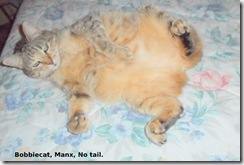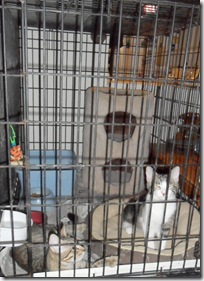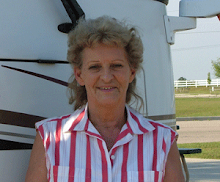For Travel Tuesday let's "Come to Boston!"
Boston’s national parks lead visitors back in time to our nation’s beginnings.

"
"On a recent excursion to visit the Freedom Trail, a 2.5-mile walking trail that wends among 16 historic sites in downtown Boston, I entered the Granary Burying Ground, final resting place of Samuel Adams and Paul Revere, among other Revolutionary Era Who’s Whos. Here, a teenage girl peered at a gravestone and whispered to her friend, “Didn’t we learn about him in U.S. History?”
Yes, I wanted to say, you probably did. Anyone involved in our nation’s founding probably crossed paths with this city at some time or another.
Presidents were born here. Revolutionaries battled here. The idea of Liberty with a capital “L” simmered in these streets. But less-than-heroic events also smoldered here: In response to desegregation and busing, riots erupted, and off these shores, our government interred Native Americans and prisoners of war. For the peripatetic traveler, experiencing urban Boston is to experience a historical treasure hunt—even when the lessons contradict one another.
I live here, and I’m always astounded by how much history this city encompasses. I’m also a little embarrassed by what I ignore on my daily trips about town. Each time I’m anointed amateur tour guide, I’m reminded of the massacres, speeches, and tea parties that took place in the same cramped squares and streets now chock-a-block with chain restaurants and motorized vehicles. I’m also astounded by how much history I’ve forgotten—and how overwhelming it can be to try to catch up.
In a city where voices seem to whisper behind every crooked headstone that “So-and-So slept here,” it’s best to pace yourself. Fortunately, how you carve up your downtown Boston experience is up to you. Explore via guidebook, or for a richer experience, hop on a tour led by a ranger or civilian expert (role-playing the part of, say, Ben Franklin). All sites are walkable and accessible by public transportation, so leave your car behind and march into the 18th or 19th century—or even farther into the past, if you know where to look.
Boston National Historical Park
For newbies, a fine starting point is the Freedom Trail that winds through Boston National Historical Park. Unlike many properties in the Park Service, the Freedom Trail is neither a single site nor a swath of pristine land—it’s more of a march through time and place. Beginning at the gold dome of the Massachusetts State House on Boston Common, a red path zigzags along the sidewalk (sometimes marked in paint, sometimes in bricks), around parks, offices, and hotels linking burial grounds, museums, a ship, churches, and meeting houses. Historic markers along the way help tell the story of the American Revolution.
You’ll hit Granary Burying Ground first, where Adams, Revere, James Otis (who’s “taxation without representation” called colonists to arms), and other famous historical figures are interred; then King’s Chapel, the first Anglican Church in New England, which also features the first organ used in an American church and the oldest pulpit still in use in its original site. On special occasions, the church still rings the 1816 bell, “the sweetest bell we ever made,” according to Paul Revere, a silversmith and patriot best known for his ride from Boston to Lexington and Concord to warn of the arrival of British troops.
Not everyone in Boston during the Revolutionary Era was a revolutionary, however. Tories, loyal to the British Crown, also worshipped here, so the King’s Chapel offers a faint reminder of the British point of view, and the church continues to follow a form of the Anglican liturgy in its worship services today.
From the chapel, follow the red-brick road to the Old South Meeting House, where thousands of Bostonians plotted the Tea Party—a protest against a British tea tax that ignited the American Revolution. Nearby, the Old State House stands as the oldest public building in the nation, where the influential statesman Samuel Adams rallied others to resist British rule. Now, it’s a small museum and gift shop where tourists buy quill pens and baseballs emblazoned with the Declaration of Independence. (This is Red Sox Nation, after all.) Outside the museum’s door is the site of the Boston Massacre, a pivotal event in 1770 when England’s Redcoats killed five colonists, leading to brawls and kindling the war.
The site that inspires me most is Faneuil Hall; if you’re lucky, you’ll hear park ranger Merrill Kohlhofer delve into the hall’s history while channeling the many voices heard there, including Frederick Douglass declaring, “I am a fugitive slave.”
After Faneuil Hall and nearby Quincy Market—locale for eateries, shops, and vending carts—the trail veers into the North End, home of a thriving Italian-American community, as well as the Paul Revere House and the Old North Church. (Yes, that church, the one immortalized by the “One if by land, two if by sea” secret code that Revere created to signal the British army’s route.)
The trail then passes Copp’s Hill Burying Ground, the final resting place of Puritan ministers connected to the Salem witch trials, among other notable figures. Finally, the trail hops across the Charles River and through the lantern-lined streets of Charlestown to the Bunker Hill Monument and the Charlestown Navy Yard, where the USS Constitution, the world’s oldest commissioned warship still afloat, is moored. Many visitors end their urban hike at the Warren Tavern (2 Pleasant Street, www.warrentavern.com), founded in 1780, to rest their feet and enjoy a frosty beverage.
Boston Harbor Islands National Recreation Area
Not far from the Freedom Trail is Long Wharf, the launching point for the Boston Harbor Islands. Of the 34 islands, only seven are open to the public— Bumpkin, Georges, Grape, Little Brewster, Lovells, Spectacle, and Thompson—but you’ll still find a pirate’s booty of history as you zip from isle to isle by ferry (15- to 45-minute rides from Long Wharf).
Today, most of the islands are pristine, but in the past they served various unsavory purposes: prisoner-of-war camp, landfill, horse rendering factory, bordello, and small-pox quarantine, to name several. Now, the reclaimed spaces offer sunbathing, swimming, hiking, biking, bird watching, and rustic camping. Spectacle and Georges Islands have new interpretive centers and recreational areas and offer yoga lessons, jazz concerts, and children’s theater. Lighthouse buffs can climb Boston Light, the nation’s oldest continually used and human-run lighthouse on outlying Little Brewster Island. Sally Snowman, the only female lighthouse keeper in the country, works here, often in 18th-century dress.
The islands aren’t just for out-of-towners; they make an exquisite getaway for locals, too, who can take a subway train to the wharf, hop on a boat, and immerse themselves in island life within a couple of hours. On my last visit to the Harbor Islands, I camped on Bumpkin. The ferry dropped me at the dock, and I used a cart to wheel my gear to the campsite, then I joined new friends who were taking part in an annual artist-residency program. We grilled out, swam in the ocean, napped in the sun, and chatted by bonfire after nightfall—an epic park experience by any standards, and all within sight of the Boston skyline.
John Fitzgerald Kennedy National Historic Site
Just west of that skyline is the city of Brookline, a short trolley ride from downtown. Here, in a modest neighborhood, Joseph and Rose Kennedy purchased a house at 83 Beals Street shortly after their marriage in 1914. Three years later, on May 29 at 3 p.m., Rose Kennedy gave birth to their second son: John F. Kennedy, the 35th president of the United States.
Although the house reflected a healthy economic status in Kennedy’s time, it’s hard to imagine how four adults (two parents plus two servants) and four children (Joe Jr., John, Rosemary, and Kathleen) managed to live here in comfort.
“Rose was beginning to feel isolated, with the walls closing in around her,” says Jim Roberts, supervisory park ranger for the site. Nevertheless, this two-story home was the training ground for an ambitious couple with high hopes for their children’s future in public service: Rose hung reproductions of influential art on the walls and at dinnertime schooled her children in adult conversation and world affairs. In 1920 they moved across the neighborhood to a larger home at 131 Naples Road, and eventually relocated to New York City.
Before handing the house off to the Park Service in 1969, Rose tried to recreate the day of JFK’s birth by decorating the home with period furniture and personal mementos such as family photos, the bassinet where many a Kennedy once dozed, and embroidered bedspreads from Ireland. Today, the dining room table is set with fine china and, next to it, on a smaller kids’ table, you’ll see a silver porridge bowl inscribed with the letters “JFK.”
“The Kennedys are the closest thing to American royalty,” Roberts says. “But they weren’t gods. They were people like us.” For scholars and citizens alike, there’s a good reason to visit in 2011, which marks 50 years since the beginning of the Kennedy Administration. “JFK is still in the minds of people all over the world,” says Roberts, alluding to the scholars, tourists, and historians who travel here to reconnect with this story.
Standing in the foyer, I was reminded that JFK’s legacy still resounds all over the city. I could suddenly feel the connection that runs like buried cable between this house and the many sites of the Freedom Trail, between the Revolutionary Era and the “Days of Camelot” (the JFK-inspired period of hope and optimism).
I was also reminded of something I learned from Kohlhofer on my tour of Faneuil Hall: JFK gave the final speech of his 1960 presidential campaign there.
It’s the same place where, today, immigrants take their oaths of U.S. citizenship. “If you want to see anyone who is excited about becoming an American,” Kohlhofer said to the assembled crowd, “Come here, Come to Boston."
TRAVEL ESSENTIALS
"Boston’s Logan Airport is about a 15-minute drive (or a slightly longer bus and subway ride) to the heart of downtown, the Freedom Trail and Boston National Historic Park (www.nps.gov/bost), and the waterfront. A new visitor center under construction in Faneuil Hall is scheduled to open in December 2011.
A convenient hotel is Boston Marriott Long Wharf, a clam-shell’s throw from Long Wharf-North. For eats, try Sel de la Terre (www.seldelaterre.com), which features roasted free-range chicken and George’s Bank lemon sole. Once on the Boston Harbor Islands (www.bostonislands.com, www.nps.gov/boha), pick up corn on the cob, lobster rolls, and fried seafood at Jasper White’s Summer Shack on Georges and Spectacle Islands. Ferries run from May to October; reserve ahead on high-season days or to visit Boston Light.
To camp on Grape, Bumpkin, and Lovells Islands, visit www.reserveamerica.com.
To get to the John Fitzgerald Kennedy National Historic Site in Brookline, take a “C” Cleveland Circle trolley “outbound” from the Park Street MBTA station, then get off at Coolidge Corner. From there, the house is a short walk.
The site is open Memorial Day weekend through October, and offers guided tours only: www.nps.gov/jofi. "
From: http://www.npca.org/magazine/2011/summer/home-of-the-brave.html
__________________
The Mayflower Compact
Among the first groups of colonists who settled in North America were the pilgrims, who established the Plymouth Colony in what would later become the state of Massachusetts.

Source: United States Library of Congress
"On Nov. 11, 1620, as their ship the Mayflower waited to land near present-day Cape Cod, the colonists signed the Mayflower Compact, agreeing on their purpose and how they would govern themselves.
The Compact stated that they had "undertaken for the Glory of God, and Advancement of the Christian Faith, and the Honour of our King and Country, a Voyage to plant the first Colony in the northern Parts of Virginia . . ." According to their own words, evangelism and furtherance of the Christian faith were clearly stated goals of the group." Article by Good News Editor
________________
Fall vacations in Boston

"As leaves turn crimson, gold and orange, a fall vacation in Boston can be breathtakingly picturesque. Halloween celebrations and Thanksgiving parades abound. And with students returning, the university town regains its vibe.
Fall colors
Burnt orange, deep red and brilliant yellows color the city during the fall. Join dedicated photographers and capture the change of color as you stroll through leafy
Boston Common. Don’t miss the golden foliage reflected in the lagoon of the
Public Garden. Other photogenic spots include the tree-lined boulevard of
Commonwealth Avenue in trendy Back Bay and acorn-strewn paths in the
Back Bay Fens, west of downtown. Boston’s Revolutionary War
Freedom Trail, dubbed the Foliage Trail during fall, is also particularly striking.
Halloween festivities
Book a Boston fall hotel and enjoy Halloween as locals embrace the chance to dress up in flamboyant and frightening costumes. Quirky Halloween-inspired events include the Howl-oween Dog Costume Contest & Pet Parade at
Faneuil Hall Marketplace. Halloween is also a good time to book a trip on the scary
Boston Ghost Cruise, which offers family-friendly trips around Halloween.
Ghosts and Graveyard tours are also popular at this time of year, focusing on the more macabre events in Boston’s history.
Festival fever
One of the best things about a fall break in Boston is the abundance of festivals and celebrations in the city. September is a chance to see top movies and A-listers during
Boston Film Festival. And every year, Harvard Square holds an
Octoberfest featuring live entertainment, Bavarian food and German-style beer gardens. Local restaurants also celebrate
Thanksgiving in November with traditional dishes like maple syrup-baked sweet potatoes and green bean casseroles.
Pumpkin season
What’s for lunch or dinner is a big deal for Boston foodies, and with pumpkins in season during fall, menus across town feature the big orange fruit in everything from pancakes to pies. A local specialty is homemade pumpkin ravioli. Warm up with pumpkin lattes in Boston’s coffee shops. Or seek out the pumpkin-spice coffee at the locally owned
Polcari's Coffee Shop in the North End.
Fall sports season
Soak up the atmosphere of the new sports season with Boston’s football- and baseball- loving locals. Hope that you can book tickets to see the New England Patriots kick off the football season at
Gillette Stadium. Meanwhile maybe you can catch the legendary Red Sox chasing another World Series title at
Fenway Park. Or take a tour of the legendary ballpark that opened in 1912. If you can’t get tickets to the season’s opening games, drop into one of Boston’s numerous sports bars for a hot dog, all the way, and some Samuel Adams Boston Lager.
Toe-tapping jazz bands
September hosts the nine-day Berklee BeanTown Jazz Festival, Boston’s largest outdoor festival, across nine stages in Boston and Cambridge. Hear everything from cool Cuban jazz and upbeat mambo to soulful Chicago blues at venues as varied as the Berklee Performance Center to Scullers Jazz Club. Also look for outdoor stages along Columbus Avenue. Families will find plenty to do along Columbus Avenue at the family festival park, including an Instrument Petting Zoo."
From: http://www.hotels.com/articles/ar000316/fall-vacations-in-boston/
______________
More about Boston: http://www.new-england-vacations-guide.com/boston-vacations.html
______________
Yesterday:
Another great early morning, the AC turned off for a while, and the house could be aired out. When I took the trash out to the road about 10.30, it was still quite pleasant, so I pulled weeds in the shady front yard, but it soon warmed up once the sun got around there.

My "Bobcat" is a "Rumpy" Manx, and they have an extra problem that other cats don't.
"‘Rumpy’ - lack of tailbones: The shortened spine in ‘rumpy’ cats results in malformation of the lower spinal cord. A depression can be felt at the end of the spine where the tailbones are absent. Consequently nerve supply to the lower back region of the cat is inadequate. This causes abnormal hind limb movements and constipation."
So I have to feed Bobcat a special diet, including canned pumpkin, (NOT Pumpkin Pie Filling.)http://www.pets.ca/dogs/tips/tip-75-pumpkin-for-cats-pumpkin-for-dogs-pumpkin-for-diarrhea-or-constipation/, as I have been reluctant to give her cat laxatives, as most of them contain petroleum jelly.
"These products usually contain white petroleum and work by coating the walls of your cat’s bowel and his stool with a water-resistant film. This creates a lubricating effect, making the stool pass easier.
Long term use of these products can interfere with your cat’s ability to absorb fat-soluble vitamins like vitamins A, E and D." Read more: Types of Cat Laxative Products – VetInfo
She is not crazy about the pumpkin, though most cats and dogs are, so I started poking a fish oil capsule with a pin, and squirting it over her canned food. This made a big difference, she likes it, she feels good, and her coat is better.
So now you know what to do when your dog or cat gets an upset tummy, give it pumpkin. I open a can and keep it in small containers in the freezer, as you never know when you will need it.
The other thing I had to do was unclog my shedder blades. I had been oiling it with real Shredder Oil, but I hadn't been putting it in reverse for a while, like I was supposed to: http://www.buzzle.com/articles/paper-shredder-oil.html
My shredder has to be kept going as even though I take every scrap of paper, box and cardboard to the recycling, anything with my name and address goes in the shredder first. I hate having to open every junk mail envelope. Just tearing off my info in one place doesn't mean that it isn't somewhere else in there too. Insurance company junk mail is the worst for that.
If you are in your RV, and don't have a shredder with you, tear the info part off, and put those little pieces of paper in with the used cat litter or doggie bags. They should be safe there.
If you don't have a pet, put the pieces of paper in with your coffee grounds. If you don't drink coffee, well, you will have to put it with your veggie peelings. Anything that makes the ink run, illegible and undesirable. Identity theft is at an all time high.
After Irene, Boston will still be a great place to visit as:
"For many, if not most, people in Massachusetts, Irene was a relatively minor event, and those who didn’t lose power or have trees fall on their cars will inevitably be tempted to complain of overhype. In fact, the storm turned out to be far weaker than many of the worst-case predictions earlier in the week. Hopefully, people are accustomed enough to the vicissitudes of weather forecasting to understand that no prediction is failproof, and that outlining the worst-case scenario is part of the job. To the extent that those worst-case warnings hastened preparations for Hurricane Irene and convinced more people to stay indoors, they saved lives and property." More at: http://www.boston.com/bostonglobe/editorial_opinion/editorials/articles/2011/08/30/irenes_damage_was_extensive_but_preparations_paid_off/
Please pray for the families, as the Irene death toll is up to 40 today.
 shed, but the cats do.
shed, but the cats do. 




![Pugsy 1st.Sep.2008 001 (Small)[1] Pugsy 1st.Sep.2008 001 (Small)[1]](http://lh5.ggpht.com/-xu2V1DEY1E8/Tljg4yhBm0I/AAAAAAAAo3k/dBL3JxFYjGg/Pugsy1st.Sep.2008001Small1_thumb1.jpg?imgmax=800)













